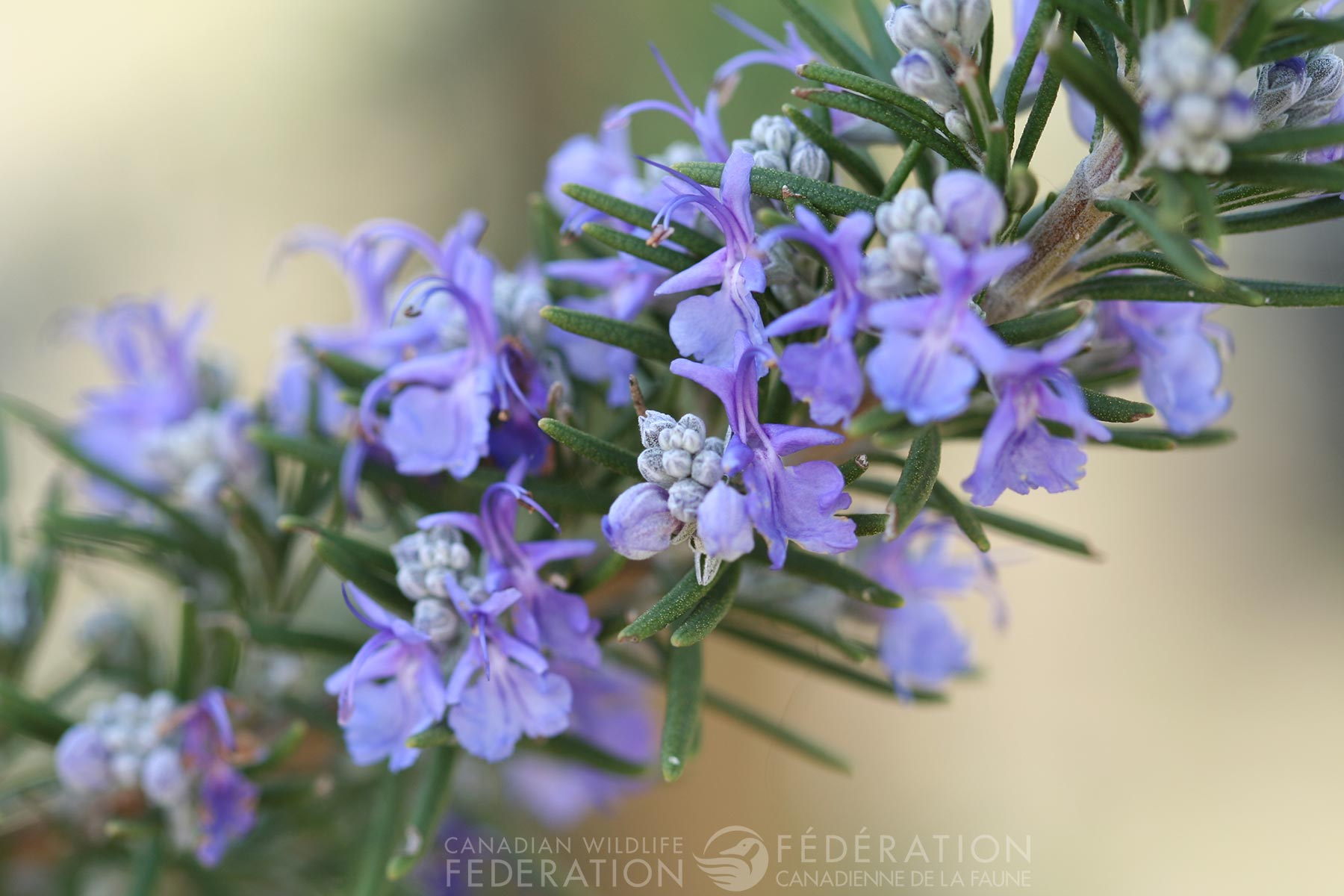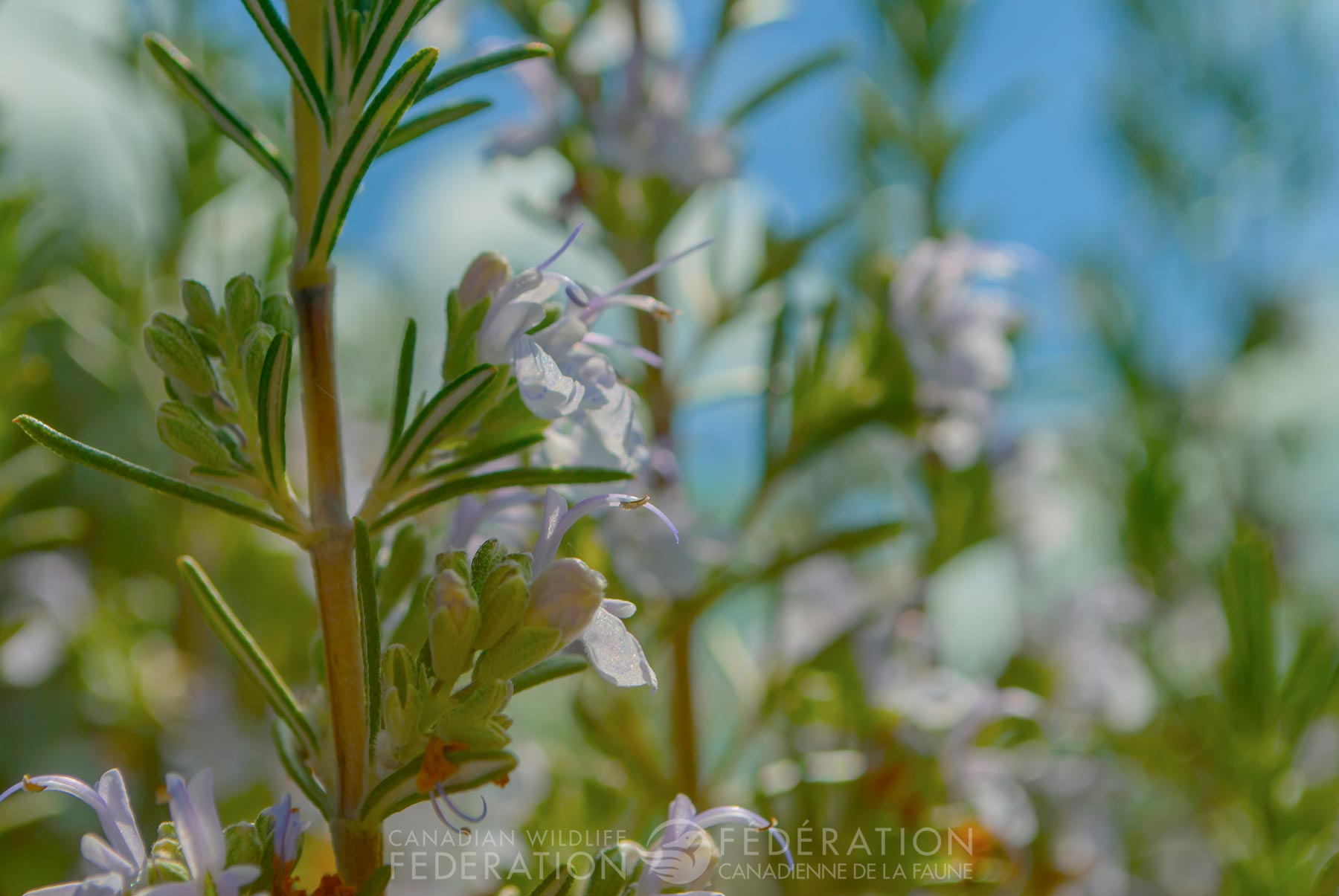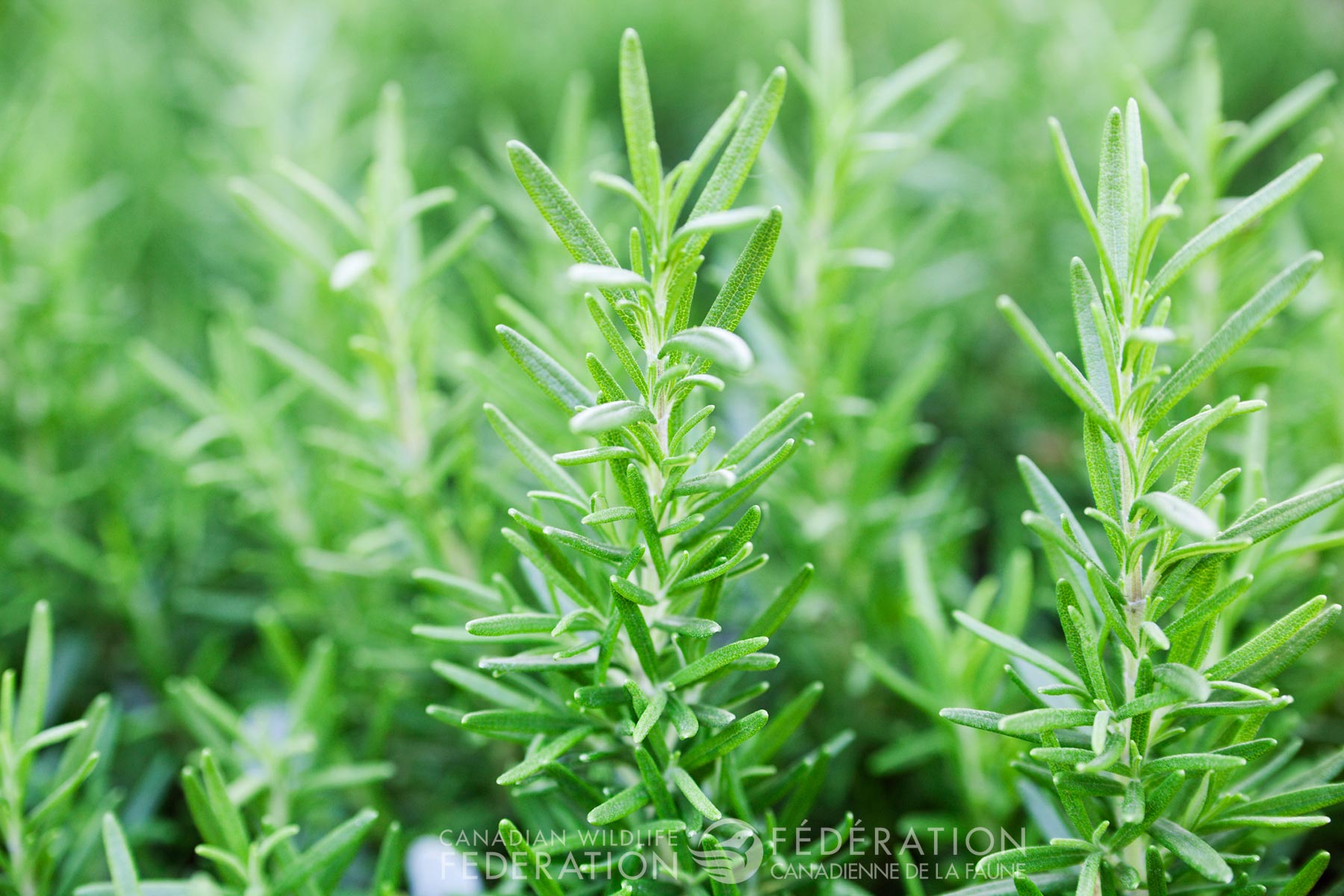 For thousands of years, people have been using Rosemary (Rosmarinus officinalis) for both food and medicine. It has a unique smell, grey green leaves and either white, pale pink or blue-purple flowers. Its name “Rosmarinus” is Latin for mist or dew (Ros) of the sea (marinus), probably due to its appearance growing in its native range along the cliffs of the Mediterranean Sea.
For thousands of years, people have been using Rosemary (Rosmarinus officinalis) for both food and medicine. It has a unique smell, grey green leaves and either white, pale pink or blue-purple flowers. Its name “Rosmarinus” is Latin for mist or dew (Ros) of the sea (marinus), probably due to its appearance growing in its native range along the cliffs of the Mediterranean Sea.
GROWING
Rosemary does well in warm climates, growing as an evergreen shrub. Here in Canada, even in the warmer regions, it can be challenging to grow year round outside. If you want to keep your plant for years to come, try either growing it in a pot that you can bring indoors or transplant it from your garden to a pot just before the weather turns cold. It will need a sunny windowsill and, while Rosemary can cope fairly well with dry conditions, it will do best with a fine misting either daily or a couple of times a week,depending on how dry the air gets in your home during the winter.
Outdoors, however, give your plant several hours of sun each day in well-drained soil. It doesn’t like excessive moisture so let it dry out before watering, being careful not to leave it dry for long, especially if in a pot.
 HARVESTING AND STORING
HARVESTING AND STORING
If you want to use fresh Rosemary, cut small sprigs (stems) or leaves as you need them. Alternatively, if you want dried Rosemary, cut the entire bush back and put cuttings in a large paper bag, and store in a dry spot with good air circulation. Once the leaves are brittle, you can remove from the stems and store in a jar alongside your other seasonings. Your leaves will be a deeper green than what you typically see on store shelves and might spur you to do the same with other herbs in your collection!
USES
As a seasoning, add some fresh or dry leaves to roast vegetables, soups or stews. Alternatively grind up dry leaves and mix with other dried herbs to create your own seasoning blend.
Cosmetically, it is known to help the skin and hair when applied topically, either as a rinse or infused in oil.

Medicinally, Rosemary tea taken from fresh or dried leaves can have a gentle effect on the body, while essential oils and tinctures are more potent and should be avoided by pregnant women and those with epilepsy or heart conditions.
Rosemary contains vitamins, minerals and other properties. As such it is a powerful antioxidant and anti-inflammatory herb. In fact, studies are now proving the validity of the age-old folklore that it can improve memory, increase alertness, enhance moods, detox the liver, help a variety of digestive complaints, improve blood circulation and help with migraine pain. Its antibacterial properties support our immune system and helps freshen breath!
Added to a bit of almond or coconut oil, Rosemary essential oil can help with tight and uncomfortable muscles. You can make a tea with the leaves by adding boiled water to some leaves in a teapot. Of course, simply adding to meals will help you get the benefits in a safe and delicious way.

You can plant Rosemary near carrots as its strong smell is said to help repel carrot flies. The flowers of this herb are used by both bees and hummingbirds so keep this in mind as you snip, keeping some to flower or harvesting early enough in the season to allow it to develop flowers by the end of the summer, harvesting the sprigs once the flowers are finished and pollinators had the chance to enjoy them, too







